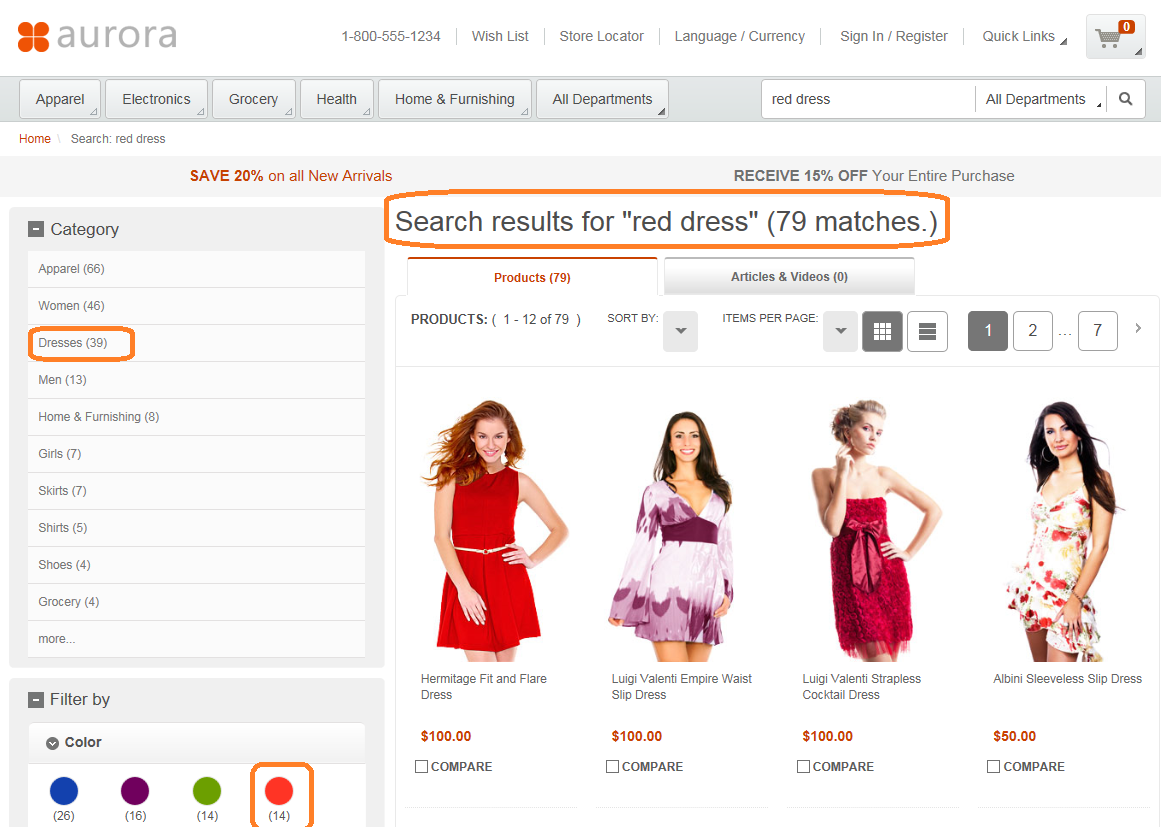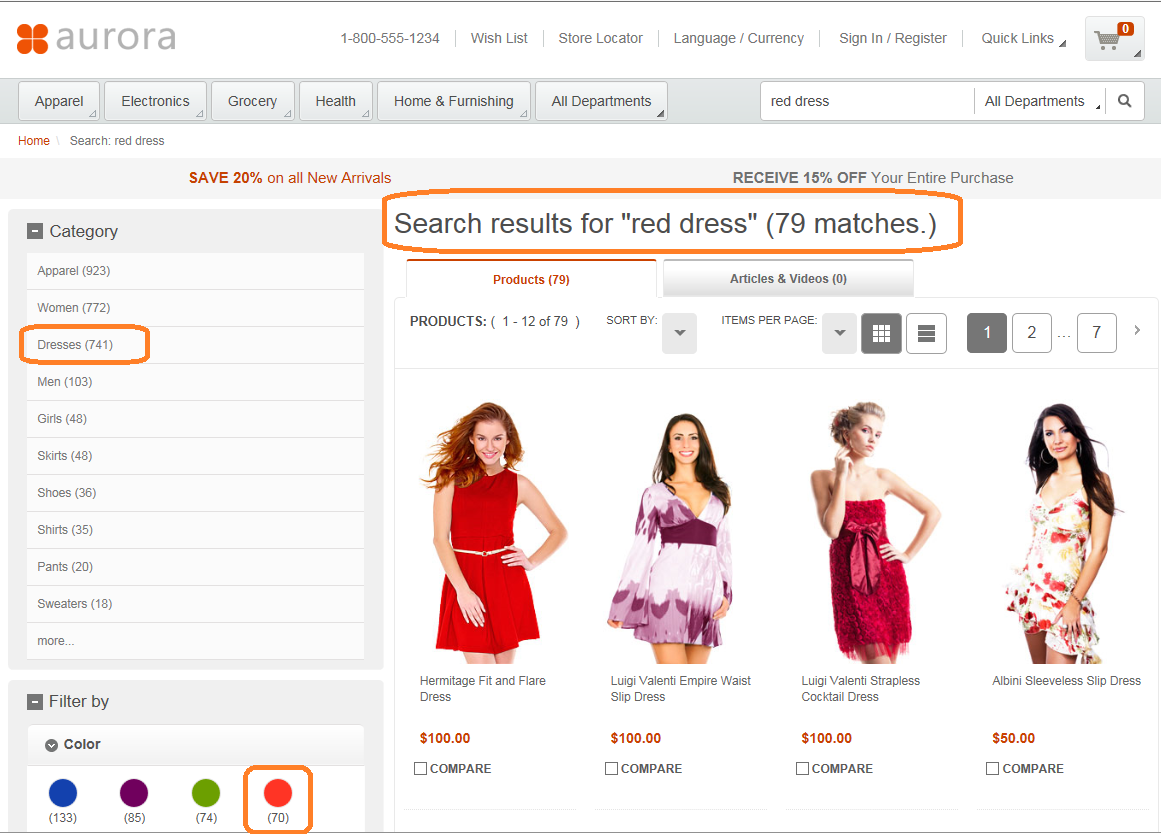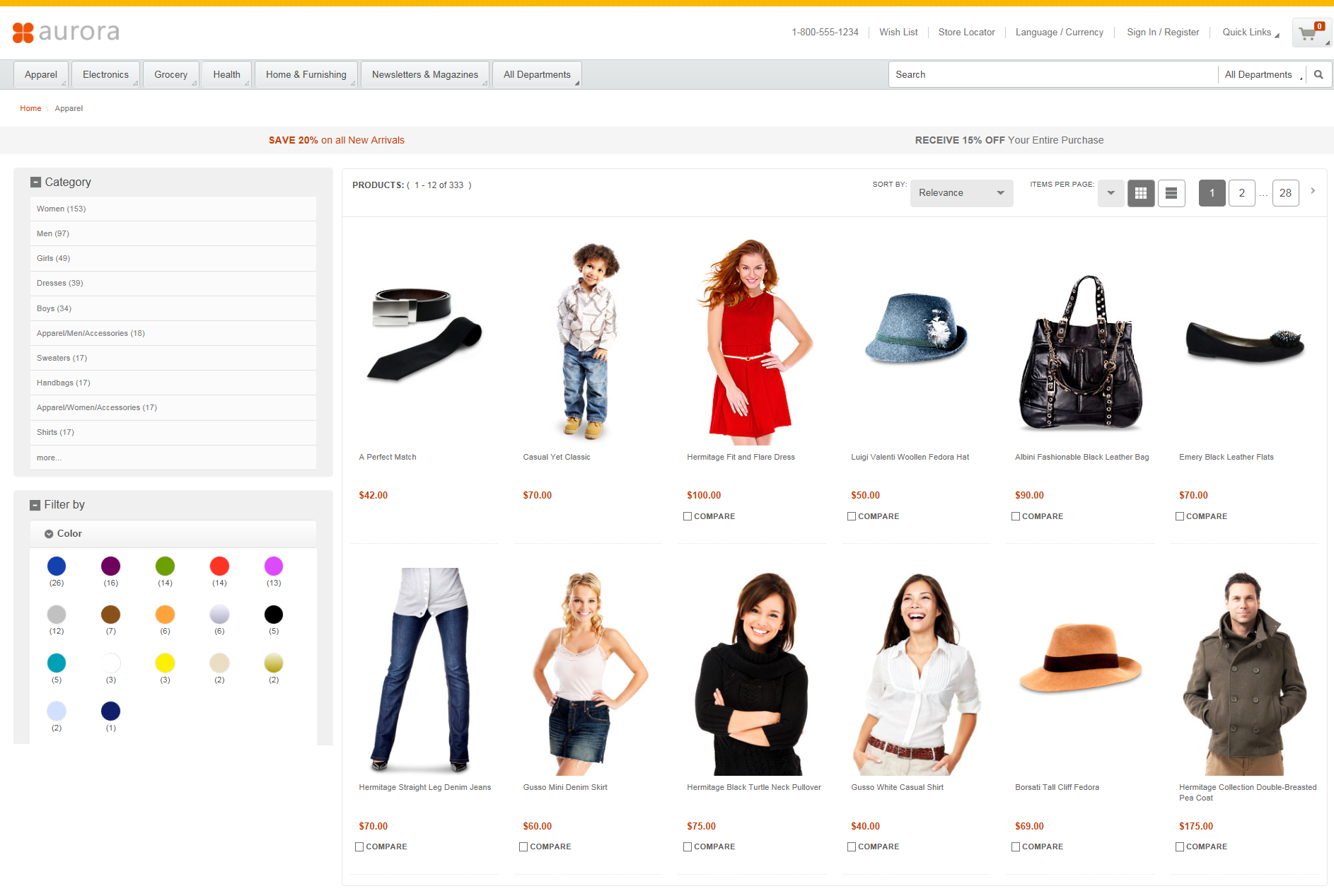The product grouping feature is based on the Solr field collapsing and result grouping
query feature. There might be performance impacts when you enable product grouping. Consider the
factors that influence performance impacts and how to design and tune to minimize the impact. It is
recommended that you assess the business requirements for the affected store pages, as some of the
configurations might change the search results being returned.
When product grouping is enabled, and to return the most relevant visual content and accurate
facet values, the search scope is increased to use the ALL search type for catalog entries,
including SKUs. Although the final search result displayed in the storefront filters out SKUs, some
of the preceding processes are still run on the entire result set, which includes SKUs.
The performance impact is typically caused by working with large result sets, caused by
increasing the search scope to include SKUs. The following list describes the different factors that
contribute to the extra performance impact when you work with larger result sets. Alternative
options are presented that can help improve product grouping performance.
Procedure
-
Product level facet count and Item level facet count:
-
SKUs are accounted for when facet count is displayed, since SKUs are included in the search
scope. However, there is a group.facet parameter, enabled by default, which can
be set to do post query operation to calculate the facet counts at the product level. This operation
has a performance impact that is proportional to the number of facets and the size of the result
set. This is the default behavior.
-
Alternatively, override the group.facet value in the search configuration
file (wc-search.xml) and set it to false.
For example:
- When group.facet is set to true, and a search is submitted for
red dress, the following screen capture shows the facet count that is
applied:

- In contrast, when group.facet is set to false, and a search is submitted
for red dress, the facet count also represents the matching items, even
though the search result displays products only:

-
When a slow response page load time is observed with group.facet set to
true, consider setting the value to false. The site administrator must decide on either displaying
the facet count at the item level, or alternatively omitting facet count values.
For example:

-
Using the default sequencing function on category pages:
-
The default sequencing function applies a sorting logic on a multivalued field. A sequencing
function is created to do so, as Solr does not support sorting on multivalued fields. The larger the
result set, the more expensive the sorting operation becomes.
-
Alternatively, consider disabling the sequencing function, and apply sorting on a single value
field.
-
Expanded category navigation on top category pages.
-
When expanded category navigation is enabled, the top category pages might return a large
result set, which might imply a larger number of facets, and expensive sequencing operations.
-
Alternatively, consider not displaying product listing widgets on top category pages that might
return high large result set, and have only product listing widgets on leaf category pages.
For example, when expanded category navigation is enabled, and a top category page such as
Apparel is selected, all of the products under the Apparel department are returned:

-
When a slow response page load time is observed on top category pages with deep search is
enabled, consider disabling the product listing widget on any other category page other than the
leaf category. Instead of displaying products, consider including links on top category pages that
direct to leaf categories instead of displaying products.
For example:






